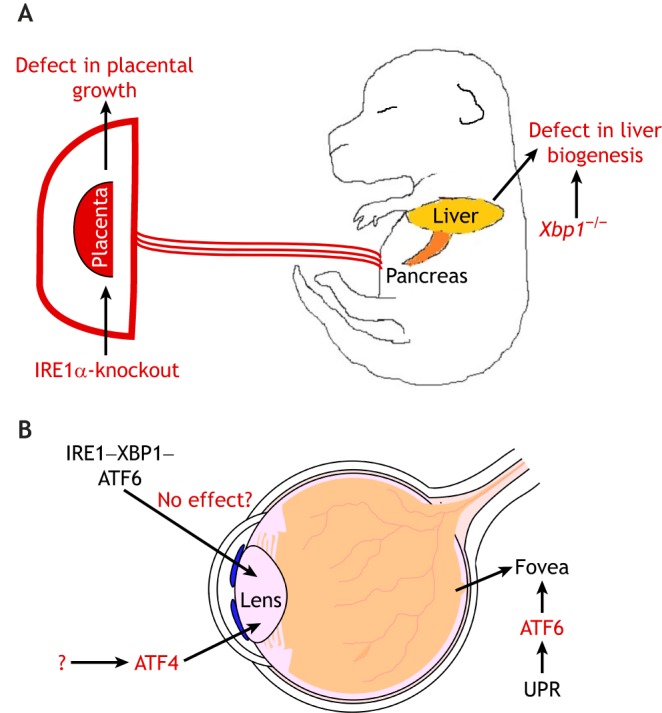Fig. 4.

Selective roles of specific branches of the UPR in animal development. (A) IRE1α-knockout impairs placenta development in mice. However, this placenta phenotype has not been reported in mice lacking any of the other UPR mediators, including PERK, ATF6 or XBP1, suggesting a surprisingly selective role for IRE1 in placenta development for reasons that remain unclear. (B) Different parts of the mammalian eye require distinct branches of the UPR for development. In the posterior eye, the fovea is a region that contains cone cells involved in color vision. The development of the fovea is impaired in individuals with ATF6 mutations, resulting in color blindness or progressive loss of cone and rod cells. Knockout of ATF4, which mediates the PERK branch of the UPR, in mice does not give rise to the reported defects in fovea development, but instead impairs the differentiation of the lens epithelium. However, the upstream signals leading to ATF4 activation in this context are not clear. There are no reported defects in the lens epithelium that are associated with deletions of IRE1, XBP1 or ATF6, suggesting that there is a surprising degree of specificity in the roles of each UPR branch in animal tissues.
